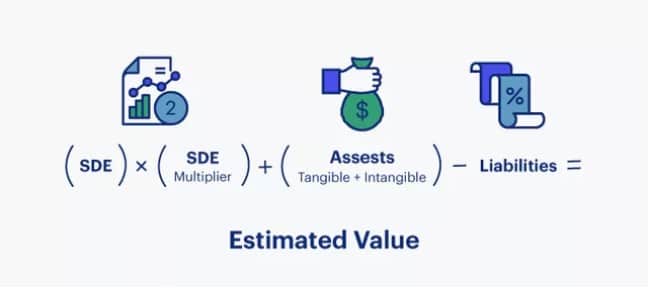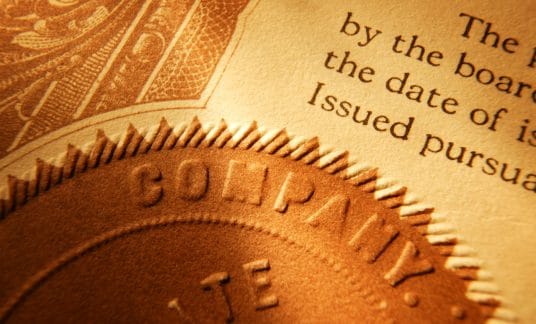Whether you need to value a small business for sale, sell your company, raise a round of financing or find a way to pay your employees, learning how to calculate a company’s valuation is essential.
If your company’s valuation is off, you can lose out on earning potential.
Business valuation is easier than you might think. We’ll cover the basics of small business valuation, business valuation methods and how to use them to find out how much a company is worth.
What Is Business Valuation?
Business valuation, by definition, is the process to determine a company’s economic value. Many business owners will look to a professional business evaluator to obtain an objective assessment.
A business valuation is used to determine taxation and partner ownership. It also can serve as the starting point in your negotiations with an investor or buyer.
There are a few key pieces of information in your company’s valuation that are crucial for the transfer of ownership. These include:
- The earnings an investor can expect to bring in from buying your company
- The total share of the company that the investor is willing to purchase
- The total amount the investor will pay for said shares.
When considering how to value a company, there are 3 main categories:
- Asset-based valuation methods
- Market-based valuation methods
- Income-based valuation methods
Let’s break down the various small business valuation methods.
Asset-Based Valuation Methods
This technique involves taking the sum of the assets your business owns and placing a combined market value on them.
Pretty much anything that can be bought or sold in the possession of your business can count as an asset. This includes:
- Real estate
- Company vehicles
- Patents and trademarks
- Equipment
- Inventory
- Digital accounts (e.g., websites, social media)
There are 2 main techniques to the asset approach to valuing a small business: going concern and liquidation.
The Going-Concern Asset-Based Approach
Under the going-concern approach, it’s assumed the business will continue to operate in the future and remain profitable.
The going-concern approach includes intangible assets in the company’s valuation, which has the effect of raising the company’s valuation.
For instance, a company’s total tangible assets might put it at a value of $5 million, but with its reputation as a regional leader in the commercial printing industry, it could be valued as high as $30 million based on projected future cash flow.
The Liquidation Asset-Based Approach
An asset liquidation approach involves valuing the total worth of a business’s assets when it files for bankruptcy or goes out of business. Because future cash flow and intangible assets aren’t counted here, the liquidation sum is lower than going-concern calculation methods.

Market-Based Valuation Methods
When it comes to how to value a company, market-based approaches are often the easiest to learn. This is because the market-based technique involves comparing your business with other businesses of the same size in your industry that have recently sold for a disclosed amount. This is similar to the real-estate market, in which property values are affected by those of other homes or real estate in a region.
Note it is difficult to use market-based valuation methods on sole proprietorships. Because these companies are individually owned and usually privately held, it can be challenging to obtain information about recent sales.
This method works best if you can compare your business with multiple similar businesses in your area.
Income-Based Valuation Methods
These methods pin the value of a company to its expected capacity to generate revenue in the future.
One of the most common forms of income-based valuation is the capitalization of earnings method. In short, this technique calculates a company’s worth by taking the business’s discretionary cash flow and dividing it by the capitalization rate.
Think of discretionary cash flow as the capital available to a business that, if withdrawn, won’t impact the operations or longevity of the business.
The capitalization rate, on the other hand, refers to the net income that an investment property is expected to generate.
Although the capitalization of earnings method may be the most accurate method of company evaluation, it should only be done in consultation with an accounting professional. A miscalculation of cash flow or cap rate can result in thousands of dollars in lost revenue.
Business Valuation Tips and Tricks
Let’s break down some of the most important business valuation tactics to help you make an informed business valuation.
Know Your Seller’s Discretionary Earnings
One of the most under-appreciated aspects of business valuation is a tool referred to as a seller’s discretionary earnings (SDE). Similar to earnings before interest, tax, depreciation and amortization (EBITDA), a business’s SDE provides a snapshot summary of a business’s real value. However, unlike EBITDA, SDE adds in the business owner’s salary and benefits. For this reason, SDE figures always are higher than EBITDA.
Your business’s SDE says a lot about the profitability of your small business. When buying or selling a small business, SDE figures must be included.
Know Your Assets
The combined value of your assets should provide you with a crude estimate of your business’s valuation, which you can then use as a starting point during negotiations with buyers or investors.
Make a detailed list of the resources that comprise your business. This should include everything from standard tangible assets and liabilities to intellectual property, investments and cash reserves. If you’re unsure of what to include, consider running your list by an accountant.
You also should round up the various liabilities that your company has. The value of these liabilities should be subtracted from the total value of your business’s assets.
Common business liabilities include:
- Business loans
- Outstanding credit-card debt
- Notes payable
- Accounts payable
- Unearned revenue
- Accrued expenses
Know Your Market
Knowing how to value a business begins with understanding the value of similar companies within your industry or niche.
If your company is public, you can review other publicly traded businesses’ quarterly and annual financial reports online. However, industry-specific databases such as Crunchbase regularly post updates on business ownership transfers in the technology industry. Tools such as these provide a competitive edge when learning about your market.
Master the Multiplier
The final step in learning how to value a business is to determine your SDE multiplier. This figure ranges between 1 and 4; multiply that amount by your SDE to find out how much you should sell for.
The exact figure will vary by industry type and company size, but to arrive at it, you likely will require consultation with an external expert.
However, once your SDE and multiplier are narrowed down, you can find your business’s estimated value by plugging the figures into the formula below:












